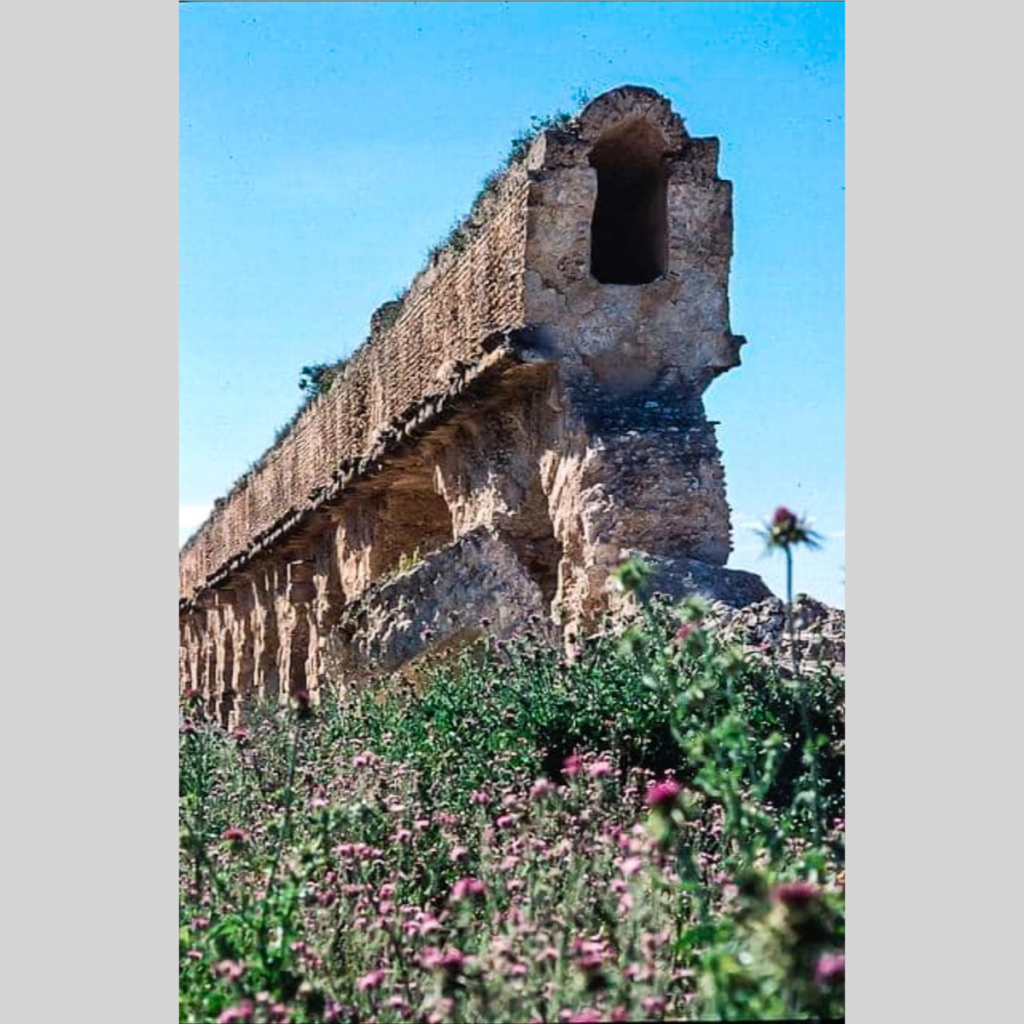
The Zaghouan Aqueduct or Aqueduct of Carthage is an ancient Roman aqueduct, which supplied the city of Carthage, Tunisia with water. From its source in Zaghouan it flows a total of 132 km, making it among the longest aqueducts in the Roman Empire.
40 ha of its length are also classified as an Important Bird Area (TN013) as the cavities and holes in the aqueduct are used as nesting and roosting sites for falcons and other species.

The date of the construction of the aqueduct is not entirely clear. Sources mention a visit by the Emperor Hadrian in 128, with which a five-year-long drought is meant to have come to an end. The water shortage resulting from the drought might have convinced him that the people should not rely only on rainwater anymore. A second event that might have inspired it was the opening of the Baths of Antonius in Carthage in 162. These facilities on the same scale as the Imperial baths in Rome demanded a steady supply of water, which could not be fulfilled with rainwater.
The aqueduct draws on several sources which ran dry at different times. The first and most important source is located near the town of Zaghouan in the Djebel Zaghouan, a mountain range about 60 km south of Carthage. In Roman times a sacred fountain structure was built over the spring, which became one of the most important in ancient North Africa.
The sacred fountain is located on an artificial terrace. It is open on the north side, and on the southern side there is an open space enclosed by a 4-metre-wide (13 ft), crescent-shaped portico. In the center of the portico is a cella from which the spring sprang.
The outer wall had a core of Roman concrete covered with coarse limestone bossages. This wall continued from the ends of the crescent-shaped portico and was divided into 26 sections be engaged columns. In every second section, there is a niche for statues, which do not survive. Opposite each engaged column is a full column, which together once supported a vaulted peristyle. The vaults are made of porous travertine covered in marble, while the columns are sandstone. The exterior of the vault was sealed with waterproof Opus signinum and left without further protection. The floor of the portico was decorated with mosaic. The cella, the most important part of the building was built from limestone and clad in marble.
There were five springs in the area of the sacred fountain. These were in the area of the artificial terrace in their original, underground bed and gathered in a basin under the terrace. From this basin, the water then flowed into the pipe of the aqueduct. As well as feeding the aqueduct intake, the basin also served to clean the water – while the water sat in the basin, impurities would settle on the bottom.
In Severan times, a second source was attached to the aqueduct. This was located in the region of Djouggar. A sacred fountain was built over this spring too, but it never reached the significance of the one at Zaghouan.